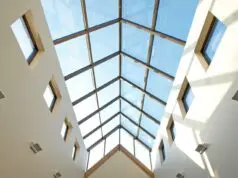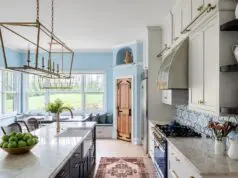
The concept of the “American Dream” has been core to the identity of the United States since its founding. At its most basic level, it refers to the ideal that anyone in America can achieve success and prosperity through hard work and determination. Owning your home has long been considered a key part of achieving the American Dream. For many, homeownership represents independence, security, stability and a piece of the economic pie.
The Benefits of Homeownership

The experts at Denver mortgage broker Mortgage Maestro say that there are many practical and economic benefits associated with owning your own home. Homeowners build equity in their home over time as they pay down their mortgage, meaning the home becomes an asset and a form of forced savings. Having this equity gives financial flexibility to homeowners and an opportunity to tap into funding if needed through options like home equity loans. Additionally, home mortgage payments and costs are generally fixed, providing stability against rents that may rise. The stability, privacy and freedom that comes with owning your own home can also lead to better life outcomes around health, education and civic participation compared to renting.
Challenges to the Dream in the 21st Century
Nevertheless, the traditional idea of homeownership as an accessible path to prosperity has come under strain in the 21st century. Costs associated with buying a home, including down payments, closing costs, and mortgage payments have substantially increased. When accounting for inflation, home prices have roughly doubled since the mid-20th century. At the same time, factors like soaring higher education costs and stagnating wages make it harder for young people to save up enough to buy their first home. These trends have pushed homeownership out of reach for larger segments of the population.
The Homeownership Rate Decline

As a result of these challenges, the overall U.S. homeownership rate has declined substantially in recent times. This decline has largely been driven by younger adults who are buying their first home later or choosing not to purchase at all. For example, the homeownership rate for adults aged 24-35 sits far below the rate of previous generations when they were the same age. Rising unaffordability coupled with lifestyle shifts seem to be pushing younger generations like Millennials and Gen Z away from viewing ownership as a necessary step.
The Geography of the Dream
There are also key geographical differences in realizing the dream of homeownership. Rates tend to be higher in suburban or rural areas where home prices are lower compared to urban coastal cities. Additionally, homeownership remains out of reach for many marginalized groups as a result of decades of discriminatory policies and practices around housing availability, pricing, lending and more. The Black homeownership rate currently trails behind other racial demographics. Significant gaps also persist for Hispanic/Latino and Native American households.
Is the Dream Still Alive?

The viability of the American Dream based around boundless opportunity and upward mobility has clearly taken a hit based on declining homeownership. However, the desire to own a home remains strong particularly for young families looking for space and stability. Achieving the dream may require shifts in expectations to account for smaller spaces as well as increased urbanization and density.
Government policy interventions around tax benefits, lending practices and zoning reform may also be necessary to help bring back accessibility. The coming decades will determine whether the essence of the ownership dream proves durable even as its traditional trappings change form. At stake is nothing less than how Americans conceptualize freedom, security and what constitutes the baseline of a “good life”.













